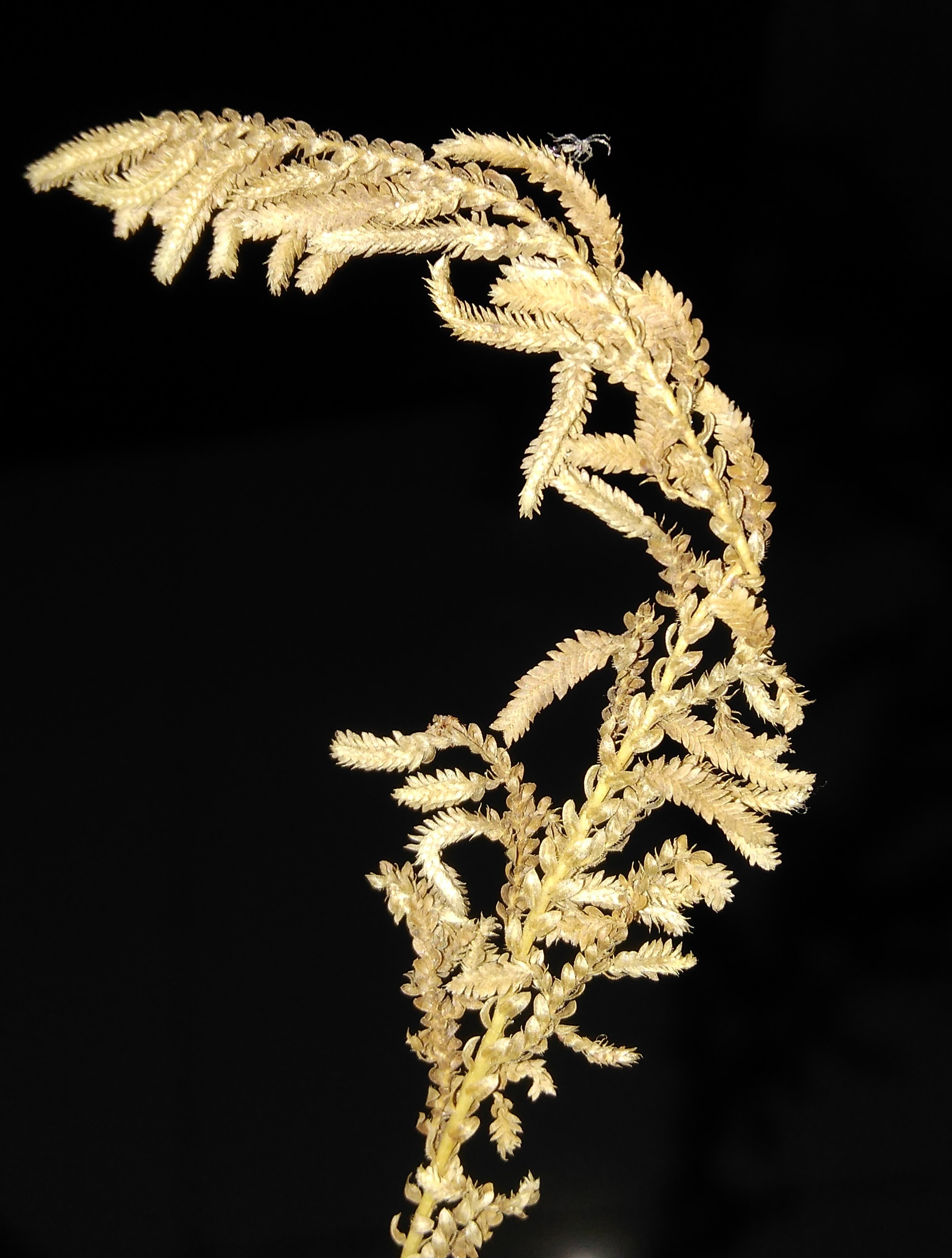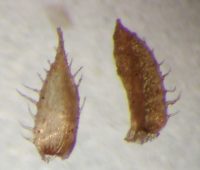|
Selaginella proniflora (Lam.) Bak. (syn: Lycopodioides dalzellii (Bak.) Kuntze; Lycopodioides proniflora (Lam.) Kuntze; Lycopodium caespitosum Dalz.; Lycopodium parviflorum Lam.; Lycopodium proniflorum Lam.; Selaginella dalzellii Bak.; Stachygynandrum proniflorum (Lam.) Beauv.);
. W. & SW. India as per POWO; .
India (Maharashtra, Karnataka), Sulawesi as per Catalogue of Life;
.
Fwd: Selaginella proniflora (lam.) Baker : 6 posts by 2 authors. Attachments (3)
Selaginella proniflora (lam.) Baker I am a little dubious about these determinations! First thing is there was no data as to where the specimens were collected. This, and altitude are ESSENTIAL. Was it from South India (the S. proniflora distribution area) or elsewhere? S. proniflora is confined to South India. Secondly S. proniflora is part of a large complex – and to recognise it you have to see the cilia on the microsporophylls. There is no photograph to show this! So how can a conclusion be reached – or was it just a wild guess to the group only? I see the strobili are very long, which doesn’t normally fit that species so well, though it could still be.
Can I please have the data as to which State it was found – and then a close-up photo of the strobilus.
Thanks, … Most probably it is from South India. However, may I request … to pl. give details of place etc.
Well as you know, decumbent stem, heteromorphic, ciliate leaves, and heteromorphic sporophylls apply to many species, though they must also be so in S. proniflora. Turning to Alston’s monograph, which Dixit basically paraphrased, one can see that the long ciliate sporophylls are the diagnostic feature, and from the type and Alston-identified specimens at BM, I confirm (for what it may be worth) that I agree this is S. proniflora, which is well known to occur in Maharashtra, as shown by Alston (and see Indian Checklist 1: 42. 2017). |





